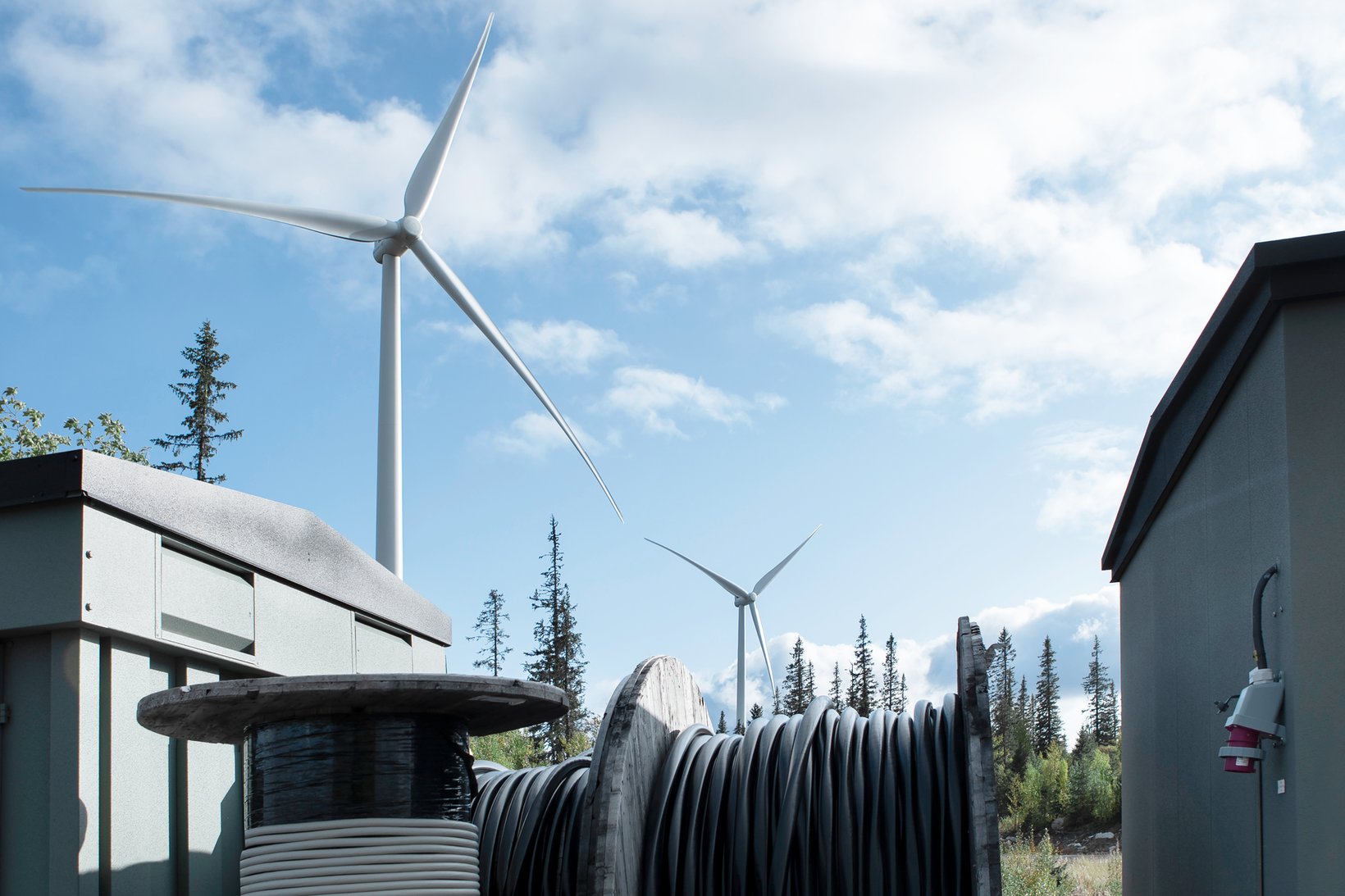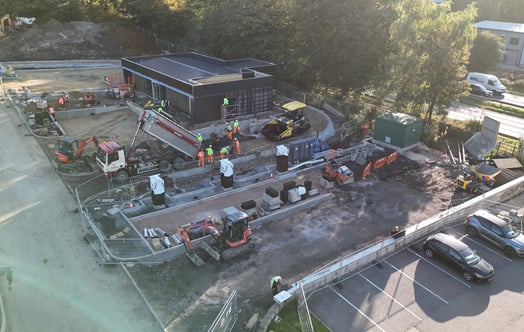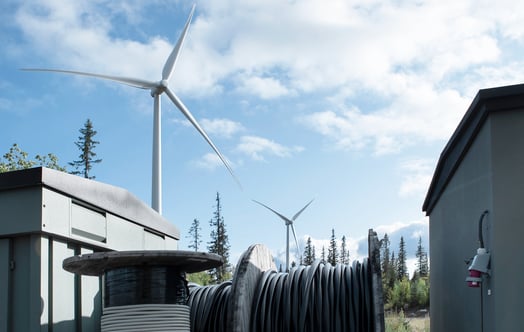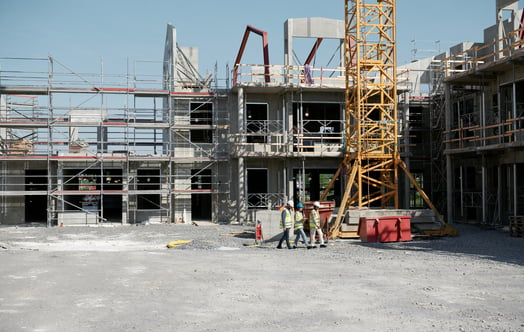
UK grid connections - Jargon buster
The UK grid connections and electrical networks sectors use a lot of acronyms and specific terminology to describe aspects of electrical network design. Below we explain the most common terms.
AP: Authorised Person
An Authorised Person is someone who has been formally authorised in writing to certify their work and practices comply with the requirements of the Electricity at Work Regulations 1989 and that they implement mandatory standards or company safety rules.
AAV: Asset Adoption Value
When Vattenfall IDNO adopts a new or upgraded network, we offer our customers an asset adoption value payment, helping to significantly reduce the total capital cost of designing and building the electrical network. Vattenfall IDNO provides strong AAVs, which help reduce risks and improve project financials for clients, whilst providing greater flexibility and support than working with DNOs. See Asset Adoption Values explained.
Adoption agreement
An adoption agreement outlines the terms and conditions when an IDNO adopt assets that have been installed by a third party. It must be signed by all Independent Connections Providers (ICP) before they commence any work on our network. A bilateral adoption agreement is site specific and signed by the ICP and Developer prior to connection, which outlines the responsibilities, liabilities and indemnities of both parties when an IDNO adopts assets installed by other parties.
Bulk Supply Point
A bulk supply point is a point of supply from a Transmission System in Scotland (known as a Grid Supply Point in England, Ireland and Wales).
BSUoS: The Balancing Services Use of System charges
Balancing Services Use of System charges covers the costs incurred by the National Grid for balancing electricity supply and demand in real-time and are calculated based on a consumer's share of total electricity.
Cable
Electrical cable which electricity travels along.
Connection agreement
A bilateral connection agreement is required when an IDNO adopts assets to their network. The bilateral connection agreement is site specific and includes the responsibilities, liabilities and indemnities of both parties. A standard connection agreement is required for all connections of more than 60kVA and is signed by the end user prior to connection. A bespoke connection agreement is required for all generation connections of more than 60kVA and is signed by the end user prior to connection.
Competition in Connections
Competition in the connections market refers to the rules around contestable works and means clients have a choice about who provides some elements of a connection process - usually an Independent Connection Provider (ICPs or an Independent Distribution Network Operator (IDNO).
CDM Regulations
The Construction (Design & Management) Regulations (CDM 2015) are the main set of regulations for managing the health, safety and welfare of construction projects. CDM applies to all building and construction work and includes new build, demolition, refurbishment, extensions, conversions, repair and maintenance.
CT: Current Transformer
A Current Transformer is used to measure the current of another circuit. CTs are used worldwide to monitor high-voltage lines across national power grids.
DCUSA: Distribution Connection and Use of System Agreement
The Distribution Connection and Use of System Agreement is a multi-party contract between licensed electricity distributors, suppliers and generators in Great Britain concerned with the use of the electricity distribution system.
Developer
A developer, or project developer, usually refers to a construction company that is building a new project which requires a grid connection, but can also refer to an ICP that is developing the electrical network for the grid connection.
Distribution Network
Distribution networks deliver power from the transmission network to homes and businesses and operate at different distribution voltages, typically High Voltage (HV) at 11, 33 or 132 kilovolts (kV) and are managed by Distribution Network Operators (DNOs) and Independent Distribution Network Operators (IDNOs).
Distribution Safety Rules
Distribution Safety Rules cover work on an electricity distribution network. Anyone working on a distribution network must have received training on the Safe Codes of Working and Distribution Safety Rules and have a relevant competency certificate and a copy of the distribution safety rules with them.
DNO: Distribution Network Operator
Distribution Network Operators (DNOs) are licensed companies that own and operate the network of cables, transformers and towers that bring electricity from the national transmission network to businesses and homes in geographically defined regions of the UK. Although now, grid connections can also be provided by IDNOs who can work anywhere in the UK.
DSO: Distribution System Operator
Distribution System Operators are the entities responsible for distributing and managing energy from the generation sources to the final consumers.
DUoS: Distribution Use of Systems charges
Distribution Use of System charges apply to every connection to the distribution network and collect the revenue the Distribution Licensee needs to build, operate, maintain, repair and invest in the network.
Easement
Easements are a right given to another person or entity to trespass upon or use land owned by somebody else. Easements are used for roads, for example, or given to utility companies for the right to bury cables or access utility lines.
EHV: Extra high voltage
The national transmission network operates at extra high voltages (EHV) of 275 or 400 kilovolts (kV) and is managed by National Grid. See our infographic explaining how the national grid works.
Electricity Act 1989
The UK's 1989 Electricity Act created the legal framework for privatising the electricity supply industry. The act allowed the establishment of new companies, required to "develop and maintain an efficient, co-ordinated and economical system of electricity supply [and] transmission", and "to facilitate competition in the supply and generation of electricity."
ENA: Energy Networks Association
The Energy Networks Association is the industry body funded by UK gas and electricity transmission and distribution licence holders.
ESQCR: Electricity Supply Quality Continuity Regulations
The Electricity Supply Quality Continuity Regulations (2002) specify safety standards which are aimed at protecting the public and consumers from danger. In addition, the regulations specify power quality and supply continuity requirements to ensure an efficient and economic electricity supply service for consumers. Duty Holders which fall under the ESQCR have duties to report certain incidents and major supply interruptions.
EV: Electric Vehicle
Guarantee Standards
Ofgem, the industry regulator, sets guaranteed standards to ensure all DNOs and IDNOs meet their customers' needs.
Grid Supply Point
Grid supply points are the points where power is delivered from the transmission system to either a distribution network or a customer directly connected to the transmission system.
HASWA: Health and Safety at Work Act
The Health and Safety at Work Act 1974 (HASWA) lays down wide-ranging duties on employers. Employers must protect the 'health, safety and welfare' at work of all their employees, as well as others on their premises, including temps, casual workers, the self-employed, clients, visitors and the general public.
HSE: Health Safety Executive
The Health and Safety Executive is a UK public body responsible for the encouragement, regulation and enforcement of workplace health, safety and welfare, and for research into occupational risks in Great Britain.
HV: High voltage
The UK’s distribution networks operate at High Voltage (HV), typically 11, 33 or 132 kilovolts (kV)
ICP: Independent Connections Provider
An Independent Connection Provider is a company operating under NERS accreditation (the National Electricity Registration Scheme) that executes works on behalf of clients on the electricity networks.
IDNO: Independent Distribution Network Operator
Independent Distribution Network Operators, like Vattenfall, connect to the local distribution network or to the transmission network to supply new housing and commercial developments with electricity. IDNOs are responsible for managing and operating the networks they develop, including all future maintenance and fault repairs. Unlike DNOs, IDNOs can connect projects anywhere in the UK and also pay developers an Asset Adoption Value.
INA: Independent Networks Association
The Independent Networks Association represent, and consists of, the UK’s leading independent utility network owners and operators who serve the domestic and commercial and industrial sectors across the UK.
ISO 9001
ISO 9001 is the international standard that specifies requirements for a quality management system (QMS). Vattenfall IDNO is ISO9001 accredited.
ISO 14001
ISO 14001 is the international standard for environmental management systems (EMS). Vattenfall IDNO is ISO14001 accredited.
ISO 45001
ISO 45001 is the international standard that specifies requirements for an occupational health and safety (OH&S) management system. Vattenfall IDNO is ISO45001 accredited.
kV: Kilovolts
1,000 volts
Lease Agreement
A lease agreement is a contract by which one party conveys land, property, or services to another for a specified time, usually in return for a periodic payment. A lease will typically be taken out for a substation which houses electrical equipment.
LV: Low voltage
Electricity is generally consumed at Low Voltages (LV) between 400 and 230 volts (V). See our infographic explaining how the national grid works.
Micro Grid
A micro grid is a small network of electricity users with a local source of supply that is usually attached to the national grid but is able to function independently.
MOP: Meter Operator Provider
A Meter Operator Provider is an organisation responsible for installing and maintaining electricity and gas meters.
MOCOPA: Meter Operators Code of Practice Agreement
The Meter Operators Code of Practice Agreement is an agreement between electricity distribution business and electricity meter operators in Great Britain that sets out the roles, responsibilities and expectations of meter installers.
National Grid
National grid is the UK Transmission network operator/owner. But, the term 'national grid' is also used to refer to the whole of the UK's electricity distributions systems and networks.
NERS: National Electricity Registration Scheme
The National Electricity Registration Scheme assess the technical proficiency of electrical providers to design, project manage and undertake electrical connections. In order to carry out work on distribution networks ICPs have to be accredited under the scheme.
NRSWA: New Roads and Street Works Act
The New Roads and Street Works Act 1991 is the legislation that requires there is a qualified personnel on site at all times while street works are in progress.
OFGEM: Office of Gas and Electricity Markets
The Office of Gas and Electricity Markets is the government regulator for the electricity and downstream natural gas markets in Great Britain.
OFTO: Offshore transmission owner
Offshore Transmission Owners (OFTOs) operate and maintain offshore electric power transmission infrastructure in Great Britain, delivering electrical power from offshore wind farms to the National Grid.
POC: Point of Connection
A Point of Connection (or PoS: Point of Supply) is the place on the electrical network where the end user's electrical equipment is physically connected to the distribution network, which also delineates the split between contestable and non-contestable works. See our explainer of contestable vs non-contestable works.
Primary Substation
A primary substation transforms power from the transmission network, reducing the voltage to the correct level for the distribution network.
Private Network
Private Networks (also known as Private Wire Systems and Private Wire Networks) are company-owned and distribute electricity around a site behind / below the meter.
PSR: Priority Services Register
The Priority Services Register is a free UK wide service which provides extra advice and support, including when there's an interruption to your electricity, gas or water supply. See details about Vattenfall's Priority Services Register.
RMU: Ring Main Unit
A ring main unit is a medium voltage switchgear, used in electrical power distribution systems, which provides continuous power with the added ability to switch power sources in the event that a repair or emergency happens.
SAP: Senior Authorised Person
A Senior Authorised Person is a professional who will be responsible for the safety of themselves and others in HV areas; the Senior Authorised Person must take steps to ensure HV equipment is safely isolated and safe to work on and is ultimately responsible as a senior figure for overseeing the work of Authorised Persons (AP).
Secondary Substation
A secondary substation transforms power from the distribution network, lowering the voltage to feed the low voltage network to which end customers are connected.
SLD: Single Line Diagram
A single-line diagram, also sometimes called one-line diagram, is the simplest symbolic representation of an electric power system.
Smart Grid
An electricity supply network that uses digital communications technology to detect and react to local changes in usage.
Substation
A substation is a part of an electrical generation, transmission, or distribution system. Substations transform voltage from high to low, or the reverse, or perform any of several other important functions. Between the generating station and consumer, electric power may flow through several substations at different voltage levels.
Switchgear
In an electric power system, switchgear is the combination of electrical disconnect switches, fuses or circuit breakers used to control, protect and isolate electrical equipment.
Transformer
A transformer works using the principle of electromagnetic induction to increase or decrease the voltage and intensity of an alternating electric current, whilst keeping the power constant.
Transmission Network
The national transmission network is the highest distribution voltage electricity network in the UK. It transmits large quantities of electricity over long distances to Distribution Networks. See our explainer on How the National Grid works.
TUOS: Transmission Use of System charges
Transmission Use of System charges are applied by the National Grid for the use of their high-voltage electricity transmission network, which transports electricity from power stations to the local distribution networks, and are calculated based on the amount of electricity consumed.
Use of Systems Charges
Use of System charges are paid by every electricity consumer as part of their bill and are made up of Distribution use of system charge (DUoS), Transmission use of system charge (TUoS), and Balancing service use of system charges (BSUoS).
Utilities Act 2000
The Utilities Act 2000 is an Act of the Parliament of the United Kingdom that deals with the gas and electrical markets in the UK. It specifies that integrated electricity companies are required to have separate licences for each of their businesses such as supply or distribution.
VT: Voltage Transformer
Voltage transformers, also called potential transformers (PT), are a parallel-connected type of instrument transformer. They are designed to present a negligible load to the supply being measured and have an accurate voltage ratio and phase relationship to enable accurate secondary connected metering.
Wayleave
A wayleave is a right of way granted by a landowner, generally in exchange for payment and typically for purposes such as the erection of telegraph wires or laying of pipes.



